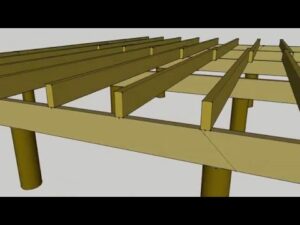El Instituto Salk es una joya arquitectónica ubicada en La Jolla, California, diseñada por el aclamado arquitecto Louis Kahn. Desde su inauguración en 1965, se ha convertido en un lugar emblemático y de renombre mundial en la investigación biomédica. En este artículo, exploraremos la historia y la belleza del diseño arquitectónico del Instituto Salk.
What style of architecture is the Salk Institute
Located in La Jolla, California, the Salk Institute is an iconic piece of architecture designed by the renowned architect Louis Kahn. The Salk Institute is known for its unique style, which is characterized by its clean lines, simple forms, and use of raw materials.
The Salk Institute is often classified as an example of modern architecture. This is due to its focus on functionality, simplicity, and minimalism. The building’s design is based on the idea of creating a space that brings together different scientific disciplines in one location. The Salk Institute is also known for its use of light and shadow, which creates a sense of drama and beauty.
One of the key features of the Salk Institute is its use of concrete. The building’s exterior is made of concrete panels that are arranged in a grid pattern. This gives the building a sense of order and structure. The interior of the building is also characterized by its use of concrete, which is left raw and unfinished. This creates a sense of honesty and authenticity.
Another important aspect of the Salk Institute’s architecture is its emphasis on the surrounding environment. The building is situated on a hill overlooking the Pacific Ocean, and its design is intended to complement and enhance its natural surroundings. The building’s use of concrete and glass creates a sense of transparency, which allows visitors to connect with the natural environment.
In conclusion, the Salk Institute is a prime example of modern architecture, characterized by its focus on functionality, simplicity, and minimalism. Its use of raw materials such as concrete and glass, and its emphasis on the surrounding environment, make it a unique and iconic piece of architecture.
Why is Salk Institute famous
The Salk Institute for Biological Studies, located in La Jolla, California, is a research facility that was established by Jonas Salk, the developer of the first polio vaccine, in 1960. Designed by renowned architect Louis Kahn, the Salk Institute is famous for its iconic architecture and its contributions to the field of biological research.
The Salk Institute is famous for its architecture. Louis Kahn, a prominent architect of the 20th century, designed the Salk Institute to be a masterpiece of modernist architecture. The building’s design is centered around two symmetrical structures that house laboratories and offices on either side of a central plaza. The plaza is framed by a series of concrete walls that provide a stunning backdrop for the Pacific Ocean and the surrounding landscape. The use of natural materials and the integration of the building into the surrounding environment make the Salk Institute a prime example of the International Style of architecture.
The Salk Institute is a world-renowned research facility. The Salk Institute conducts research in a variety of fields, including aging, cancer, neuroscience, and plant biology. The Institute’s scientists have made numerous groundbreaking discoveries, including the identification of the polio virus receptor and the development of the first vaccine for HIV. The Salk Institute is also home to several Nobel laureates, including Jonas Salk himself.
The Salk Institute is a symbol of scientific advancement. The Salk Institute represents a dedication to scientific discovery and a commitment to improving the human condition. Its groundbreaking research and iconic architecture have made it a symbol of scientific advancement and a source of inspiration for generations of scientists and architects.
What is the architectural style of Louis Kahn
Louis Kahn is a renowned architect who is known for his unique style and innovative designs. He was born in Estonia in 1901 and moved to the United States when he was a child. Kahn studied architecture at the University of Pennsylvania and later became a professor at the same university.
Kahn’s architectural style is often described as monumental and timeless. He believed that buildings should be designed to stand the test of time and that they should be built with materials that would last for centuries. His designs often feature simple geometric shapes and clean lines, and he was known for his use of natural light and shadow.
One of Kahn’s most iconic designs is the Salk Institute, which is located in La Jolla, California. The Salk Institute was commissioned by Jonas Salk, the developer of the polio vaccine, and it was designed to be a center for biological research. The building is situated on a bluff overlooking the Pacific Ocean, and it is designed to blend in with the natural landscape.
One of the most striking features of the Salk Institute is its use of concrete. Kahn believed that concrete was a noble material, and he used it extensively in his designs. The Salk Institute is made almost entirely of concrete, and the material is used to create a sense of solidity and permanence.
Another important aspect of Kahn’s architectural style is his use of symmetry. Many of his designs are symmetrical, and he believed that symmetry was a way to create a sense of order and balance. The Salk Institute is a perfect example of this, with its two identical buildings flanking a central courtyard.
In conclusion, Louis Kahn is one of the most important architects of the 20th century, known for his unique style and innovative designs. His use of concrete, symmetry, and natural light and shadow have influenced countless architects around the world. The Salk Institute is a testament to his vision and remains one of the most iconic buildings in California.
En resumen, el Instituto Salk de Louis Kahn es un ejemplo icónico de la arquitectura moderna en California. Su diseño único y funcionalidad lo convierten en una obra maestra arquitectónica que ha resistido la prueba del tiempo. Desde su creación en la década de 1960, el Instituto Salk ha sido un lugar de innovación y descubrimiento científico. La arquitectura del edificio ha sido fundamental en la creación de un ambiente de trabajo inspirador y productivo para los científicos que trabajan allí. El Instituto Salk es un recordatorio de que la arquitectura no solo es un medio para crear edificios hermosos, sino también una herramienta para mejorar la vida de las personas.




